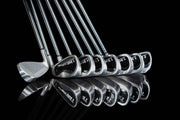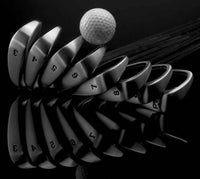Fun Golf Facts
by David Lake
You’re not the only one to lose your golf ball in the water. In fact, just at the Stadium Course at Sawgrass’ 17th hole alone, more than 125,000 golf balls a year are hit into the water.
Though it is nearly impossible to accomplish, an Oakland University student named Kassandra Komma recently scored two hole-in-ones during one nine-hole game. The chances of the happening are one in 64 million!
Here’s one good reason to play golf on those hot and sweaty summer days: golf balls travel a lot farther on hot days. In fact, a golfer who swings a club at an average of 100 miles per hour will add eight yards of distance for every 25°F temp increase.
Phil Mickelson plays left-handed, but he’s actually a “rightie”. He learned his golf swing by watching his left-handed father. He has used left-handed clubs ever since.
The average driver swing speed is 84 miles per hour. The average speed for a PGA Tour player is 108 miles per hour. Tiger Woods’ average swing speed is 130 miles per hour.
The youngest golfer to ever shoot a hole-in-one was by a five year old boy named Coby Orr. This amazing shot happened in Littleton, Colorado in 1975.
More than 80 percent of all golfers will never achieve a handicap of less than 18.
The golf term “birdie” came from an American golfer named Ab Smith. He coined the term in 1899, when he hit what he called a “bird of a shot”. Later the term was shortened into the famous golf slang, “birdie”.
The longest drive ever recorded is 515 yards.
“It took me seventeen years to get 3,000 hits in baseball. I did it in one afternoon on the golf course” ~ Babe Ruth.
A wife noticed that her husband seemed to be in a bad mood after his golf game and asked him what was wrong. He answered “Well, on the fifth hole, Ralph had a heart attack and died!” The wife was shocked as the husband continued. “Yep, it was awful. For the whole rest of the game it was ‘hit the ball, drag Ralph. Hit the ball, drag Ralph!”
Hank’s golf partner dies suddenly. A few days after the funeral, his spirit comes to visit Hank. “You won’t believe it, Hank, but there’s golf in Heaven!” Hank replies, that’s wonderful, to which the ghost replies, “Well, don’t be too excited. You have a tee-off time scheduled there this Saturday.”
Two old golf buddies were standing on a tee box overlooking a river, preparing to hit their tee shots. The first golfer pointed down the river, turned to the other golfer and said, “Look at those idiots fishing in the rain!”
“Columbus went around the world in 1492. That isn’t a lot of strokes when you consider the course.” ~ Lee Trevino.
“After all these years, it’s still embarrassing for me to play on the American golf tour. Like the time I asked my caddie for a sand wedge and he came back ten minutes later with a ham on rye.” ~ Chi Chi Rodriguez.
The higher a golfer’s handicap, the more likely he’ll try to tell you what you’re doing wrong.
Golf balls are like eggs. They’re white, they’re sold by the dozen, and a week later you have to buy more.
If your opponent has trouble remembering whether he shot a 6 or a 7, it means he really shot an 8.
When shopping for a putter, try before you buy: Never buy a putter unless you’ve had a chance to throw it.
Golf is a game where the ball lies poorly and the golfers lie well.
If you think it’s hard to meet new people, just pick up the wrong ball on a golf course.
Golfing is a great form of exercise. If you walk 18 holes, you’ll burn more than 2,000 calories. If you ride a cart, you’ll still burn an average of 1,300 calories. So even with a beer or two (and a burger at the clubhouse) you’ll still be coming out ahead!
We all know golf is a great way to spend free time, but did you know that golf was once banned in Scotland for being “too distracting”? In 1457, officials in Scotland banned golf because they believed it interfered with military training. The ban was lifted, only to be re-instated in 1471 and 1491. Eventually, Parliament must have wisened up – and now golf is one of Scotland’s biggest pastimes.
During World War II, the Augusta National Golf Club was closed for three years and the grounds were used to raise turkey and cattle to support the war effort. After the war was over, The Masters resumed in 1946, with Herman Keiser donning the famous green jacket.










